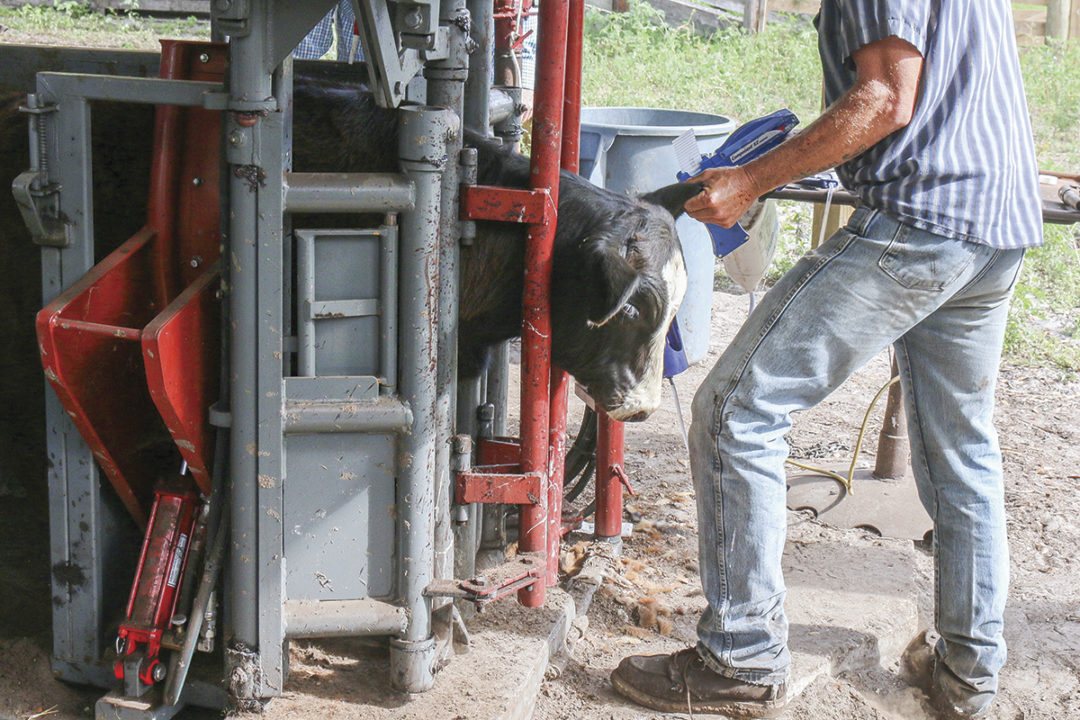Ranchers have incorporated implants as a valuable tool for decades, ensuring an addition to their bottom line in a substantial and real way.
“Implant technologies have the ability to provide long-term benefit to producers,” says Jason Smith, assistant professor and beef cattle specialist for Texas A&M AgriLife Extension Services. “We’re often looking for a silver bullet. I’d venture those are few and far between, but implants are as close as it gets.”
Smith says the feedyard sector of the industry adopted and has continued to utilize implants for many years with the exception of a small percentage of animals included in non-hormone-treated brands and marketing programs.
Missed opportunities and perceptions
It’s in the cow-calf, grass and stocker sectors where Smith sees missed opportunities due to a lack of utilization or discontinuation. He says producers will often inform those marketing or selling their animals that no implants have been used. Sometimes this is communicated to potential buyers – but at this point, it doesn’t really matter.
“This is a missed opportunity, as the time for buyers to financially benefit has come and gone,” he says. “That ship has sailed. Those cattle can’t be retrospectively enrolled in these types of programs.”
He explains another misperception is that previously implanted nursing calves respond differently when they’re administered during the finishing period. This view causes cattlemen to hesitate with their use.
“A large amount of data suggests this misplaced idea is incorrect,” Smith stresses. “The perception is: The magnitude of their response will be less. Data tells us they’ll respond exactly the same at the feedyard regardless of their calfhood status.”
He says it’s often promoted that non-implanted feeder cattle are worth more, with buyers paying higher than they would with implanted calves. While he admits there may be added value for calves enrolled in a documented and verified branding program, many skip this marketing task.
Smith says data even suggests that from an economic standpoint, the financial benefit can be greater when using them than what may be realized from non-hormone-treated cattle (NHTC) programs.
“Not always, but in most situations, data suggests the NHTC premium for feeder cattle often isn’t great enough to outweigh the added pounds received from their use,” he says.
NHTC and vocal minorities
Smith notes more small-scale operations have adopted a non-hormonal strategy, but he believes this segment is still relatively small. Most animals fed to be enrolled in NHTC plans are still destined for the relatively flat European Union markets.
Additionally, a small segment of vocal anti-hormone consumers pushes a message that all consumers share this anti-hormone philosophy, but data suggests beef price is still the main influencing factor.
“We have to be careful with our terminology,” he emphasizes. “It’s important for consumers to understand that all beef, along with all other food products, contain hormones or compounds that are biologically similar. The idea there’s added or not added hormones is irrelevant.”
Where’s it going?
Regarding future technology, Smith sees the current gap with “long days” cattle, those placed on feed for most of an entire year.
Dirk Burken, beef strategic technical services nutritionist for Zoetis, says that over the last five to 10 years, implant manufacturers have brought forward innovations of long-acting and long-duration implants providing valuable extended payout days.
“All manufacturers have wide portfolios for today’s implants, whether they be for suckling calves, pasture or feedlot cattle,” says Burken. “Those products are specifically formulated for separate phases in production systems, with each working to provide a hefty ROI when used appropriately.”
As an example, he points to the long-acting feedlot implants providing up to 200 days of hormone payout, which typically can yield up to 100 pounds of additional live-weight gain when compared to those not receiving implants.
Burken adds that manufacturers are always focused on even more effective dosages or payout characteristics.
“We concentrate on research and producer data to help steer our offerings for more ROI,” he says. “We continually evaluate and target the most efficiency possible while also delivering a product seen in the consumer’s eye as high-quality, safe and nutritious.”
To comply with the recent FDA mandates regarding reimplanting, Zoetis received approvals for new label claims on three of its products: Synovex Choice, Synovex Plus and Synovex One Feedlot. This affords the ability to use them in an approved reimplant protocol during the confined feeding phase of production.
“With this, producers have more options for extended days of hormone payout with long-acting or long-duration implants, plus the opportunity to use them as approved reimplant products,” Burken says.
Painting the big picture
Like Smith, Burken also sees non-hormone-treated cattle programs as relatively small when considering the entire beef industry.
“It’s still less than 10 percent of beef produced,” he says. “In comparison, 90 percent or more of feedlot animals are implanted at least once in their lifetime. However, non-conventional natural or organic markets have seen incremental growth over the last five to 15 years.”
While Burken admits a vocal minority are opposed to implants and Zoetis acknowledges their opinion, he believes implants are a valuable part of safe, healthy, nutritious and environmentally sustainable systems.
“We also value the consumer has a choice at the meat counter,” he says. “If they want a natural-branded or conventional-branded product, it’s a good thing – because if they pick either, they’re a beef consumer, which is something we value.”
Burken urges owners to consult their nutritionists, local veterinarians, university extension service representatives or implant manufacturers with questions or concerns on how to reap optimal value from their procedures.
Smith agrees and adds that implants are some of our most sustainable technologies creating the greatest impact on the beef industry’s prime indicators of sustainability.
“It frustrates me when I hear programs are excluding these growth-promoting technologies, arguing from a lack of sustainability standpoint,” Smith says. “This is far from true. We have a chance as a production community to do a better job of telling our story and helping consumers to understand what we do, why we do it and what that means.”








